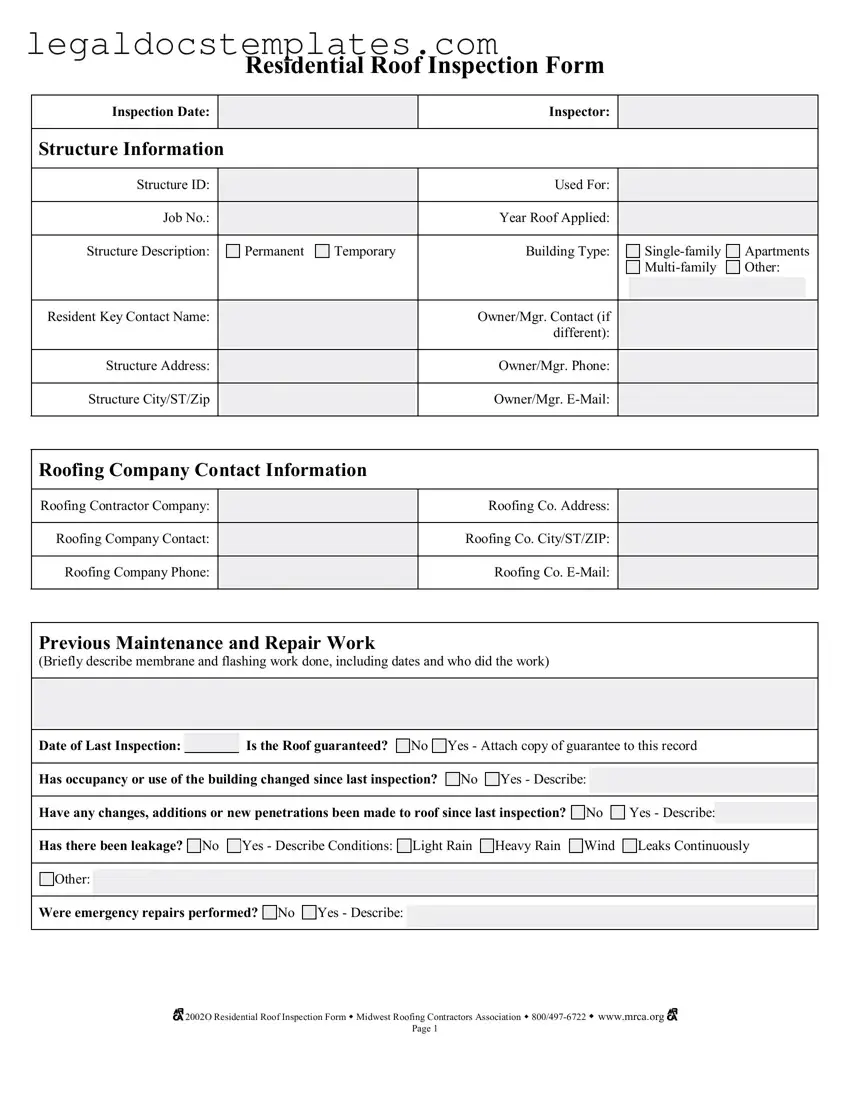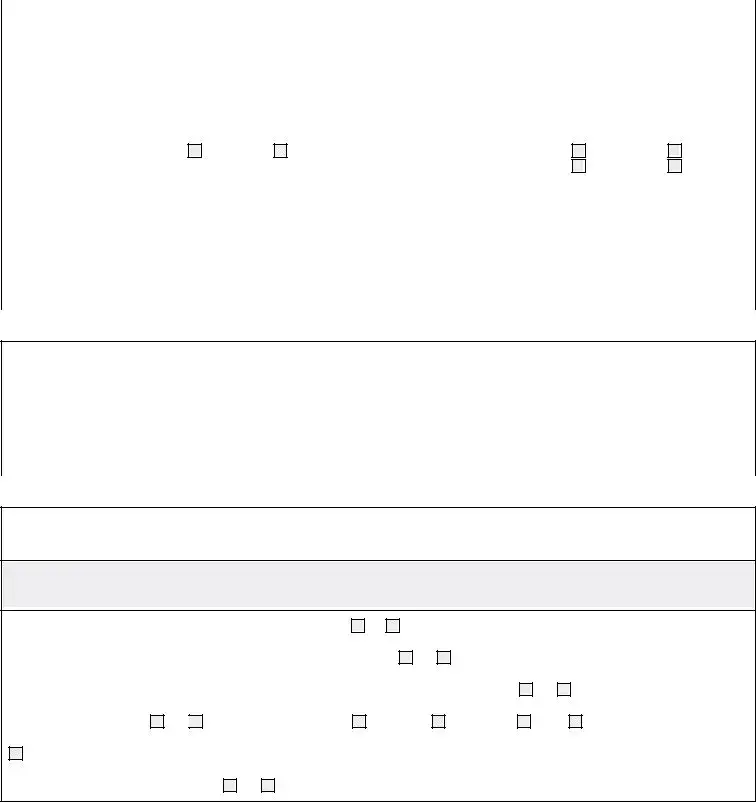The Roof Inspection form shares similarities with a Home Inspection Form, which is also a detailed checklist used to evaluate the overall condition of a home. Just like the Roof Inspection form, a Home Inspection Form covers various parts of the property, assessing elements such as electrical systems, plumbing, foundation, and windows, alongside the roof. Both documents serve as essential tools in real estate transactions, providing buyers and sellers with insights into a property's state and necessary repairs or maintenance.
Another document akin to the Roof Inspection form is the Building Maintenance Log. This log tracks all maintenance activities within a building, including roof inspections and repairs. The parallel lies in the documentation of dates, descriptions of work done, and the parties involved, similar to how the Roof Inspection form records previous maintenance and repair work, inspection dates, and roofing contractor information. Both documents are vital for maintaining building integrity and ensuring safety and comfort for occupants.
A Construction Project Progress Report shares similarities with the Roof Inspection form by documenting ongoing project details, including inspections and status assessments. Specifically, similar to the section in the Roof Inspection form that assesses different aspects of the roof condition (from membrane conditions to drainage), a progress report evaluates various construction milestones, work completed, and notes areas needing attention. Both documents are crucial for communicating the current state of a project or property component to stakeholders.
The HVAC Inspection form is another document that bears resemblance to the Roof Inspection form. It focuses on evaluating heating, ventilation, and air conditioning systems within a property. Like the Roof Inspection form, which provides details on the roof's condition, possible leaks, and repair history, the HVAC Inspection form includes assessments of equipment condition, maintenance history, and identifies issues requiring immediate action. Both play significant roles in ensuring the functionality and longevity of critical property systems.
The Property Condition Assessment (PCA) report is long and detailed, similar to the Roof Inspection form, but it encompasses the entire property's condition, not just the roof. Both documents include inspections of physical structures, identification of defects, and recommendations for repairs. The PCA report, like the roof-specific form, might detail the building envelope, including the roof, to inform potential investors, lenders, or owners about the property’s overall status and anticipated maintenance needs.
An Environmental Site Assessment (ESA) report, while focused on environmental issues, shares a resemblance with the Roof Inspection form in its structure of investigation and reportage. The Roof Inspection form's purpose is to examine the roof's condition and identify any problems, similar to how an ESA identifies contamination or environmental liabilities on a property. Both documents are thorough examinations aimed at uncovering conditions that could impact the property's safety, value, or usability.
A Safety Audit Form, designed to identify hazards and ensure compliance with safety standards, parallels the Roof Inspection form in its preventative purpose. While focusing on different aspects, both forms inspect conditions that could lead to future problems. The Roof Inspection form with its detailed condition codes resembles the checklist approach of a Safety Audit, assessing potential risks and ensuring that all elements meet required safety standards.
Lastly, the Energy Audit form is similar to the Roof Inspection form as both aim to assess specific property features for efficiency and performance. The Energy Audit evaluates how energy is used within a building and identifies opportunities for savings, much like the Roof Inspection form examines the roof for issues that could impact the home's energy efficiency, such as inadequate insulation or air leaks. Both documents are vital for optimizing property performance and can lead to cost savings and increased comfort for occupants.


 2002O Residential Roof Inspection Form w Midwest Roofing Contractors Association w
2002O Residential Roof Inspection Form w Midwest Roofing Contractors Association w 

 2002O Residential Roof Inspection Form w Midwest Roofing Contractors Association w
2002O Residential Roof Inspection Form w Midwest Roofing Contractors Association w 

 2002O Residential Roof Inspection Form w Midwest Roofing Contractors Association w
2002O Residential Roof Inspection Form w Midwest Roofing Contractors Association w 

 2002O Residential Roof Inspection Form w Midwest Roofing Contractors Association w
2002O Residential Roof Inspection Form w Midwest Roofing Contractors Association w 

 2002O Residential Roof Inspection Form w Midwest Roofing Contractors Association w
2002O Residential Roof Inspection Form w Midwest Roofing Contractors Association w 